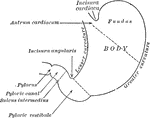
Stomach Pump
"It consists of a common metallic syringe, A, screwed to a cylindrical valve box, B, which contains…

Stomach Turned Inside Out
Stomach turned inside out, showing dissection of oblique and circular muscular coats.
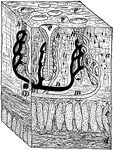
Cross-Section of Stomach Wall
"A tiny block out of the stomach wall. a, the mucous membrane; c and d, the muscles; h, gastric glands;…
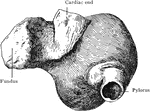
Stomach with Puckered Fundus
Stomach with puckered fundus, seen from behind and somewhat from left; hardened by formalin.

Deep Muscles of the Stomach
The middle and deep muscular layer of the stomach, viewed from above and in front.

Distended Stomach
Moderately distended stomach, viewed A, from in front; B, from inner or right side; and C, from the…
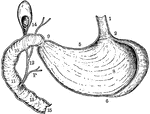
Vertical and Longitudinal Section of Stomach, Gall-Bladder, and Duodenum
Vertical and longitudinal section of stomach, gall-bladder, and duodenum. Labels: 1, esophagus; 2, cardiac…
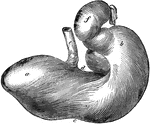
Horse Stomach
Posterior view of the stomach of a horse. Labels: a, left cul-de-sac; b, right cul-de-sac; c, greater…

Horse Stomach
Internal aspect of a horse stomach, opened from below. Labels: a, cuticular mucous membrane; b, villous…
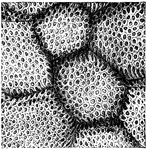
Inner surface of the stomach
"The Inner Surface of the Stomach, from which the the Epithelium has been removed, showing the Openings…
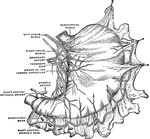
Lymphatic Plexus of the Stomach
General view of the subperitoneal lymphatic plexus of the stomach prepared by the method of Gerota.
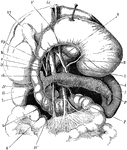
The Stomach, Pancreas, Liver, and Duodenum
The stomach, pancreas, liver, and duodenum, with part of the rest of the small intestine and the mesentery;…
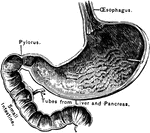
A Section of the Stomach
The opening part of the stomach where the esophagus joins it is called the cardiac opening; the one…
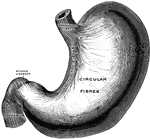
Superficial Muscles of the Stomach
The superficial muscular layer of the stomach, viewed from above and in front.
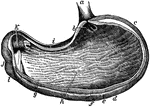
The Stomach
The stomach, the principal organ of digestion. It is a dilated part of the alimentary canal, situated…

The Stomach
The inside of the stomach with the beginning of the intestines. At 3 is the left end and at 4 is the…
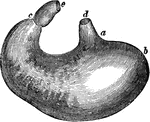
The Stomach
The stomach. Labels: d, lower end of the gullet; a, position of the cardiac aperture; b, the fundus;…

Transverse Section of Stomach
Transverse section of stomach (left end), showing general arrangement of coats.
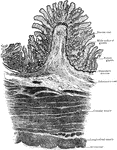
Transverse Section of Stomach
Transverse section of stomach, pyloric end; ruga is cut across, showing mucosa supported by core of…
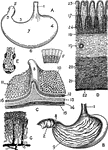
Views of the Stomach
Views of the stomach. Labels: A. stomach (human). B. Same, anterior wall removed. C. Portion of stomach,…

Cross Section of the Trunk Through the Liver and Stomach
Section through the liver and stomach, at the level of the xiphoid process.
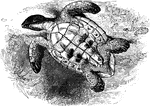
Imbricated turtle, overturned
An imbricated turtle, flipped onto its back, revealing its underbelly.
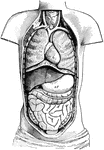
Ventral Cavity of the Body
Diagram of the Body opened from the front to show the contents of the ventral cavity. Labels: d, diaphragm;…



